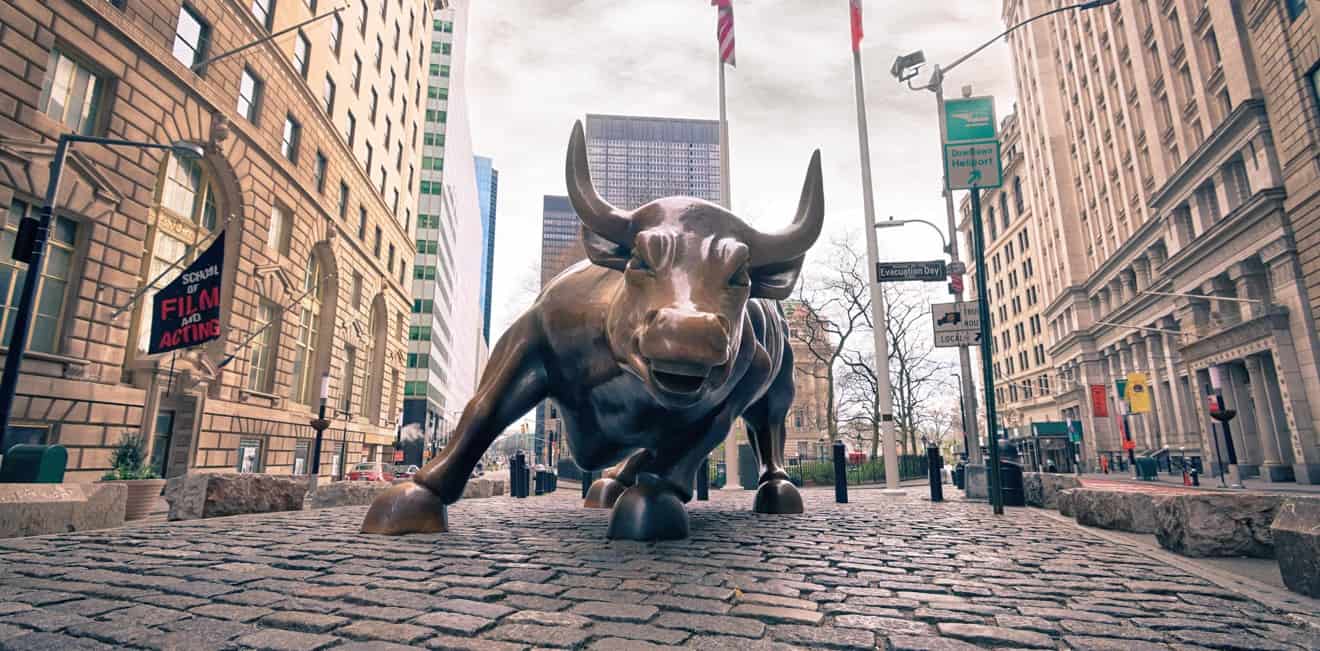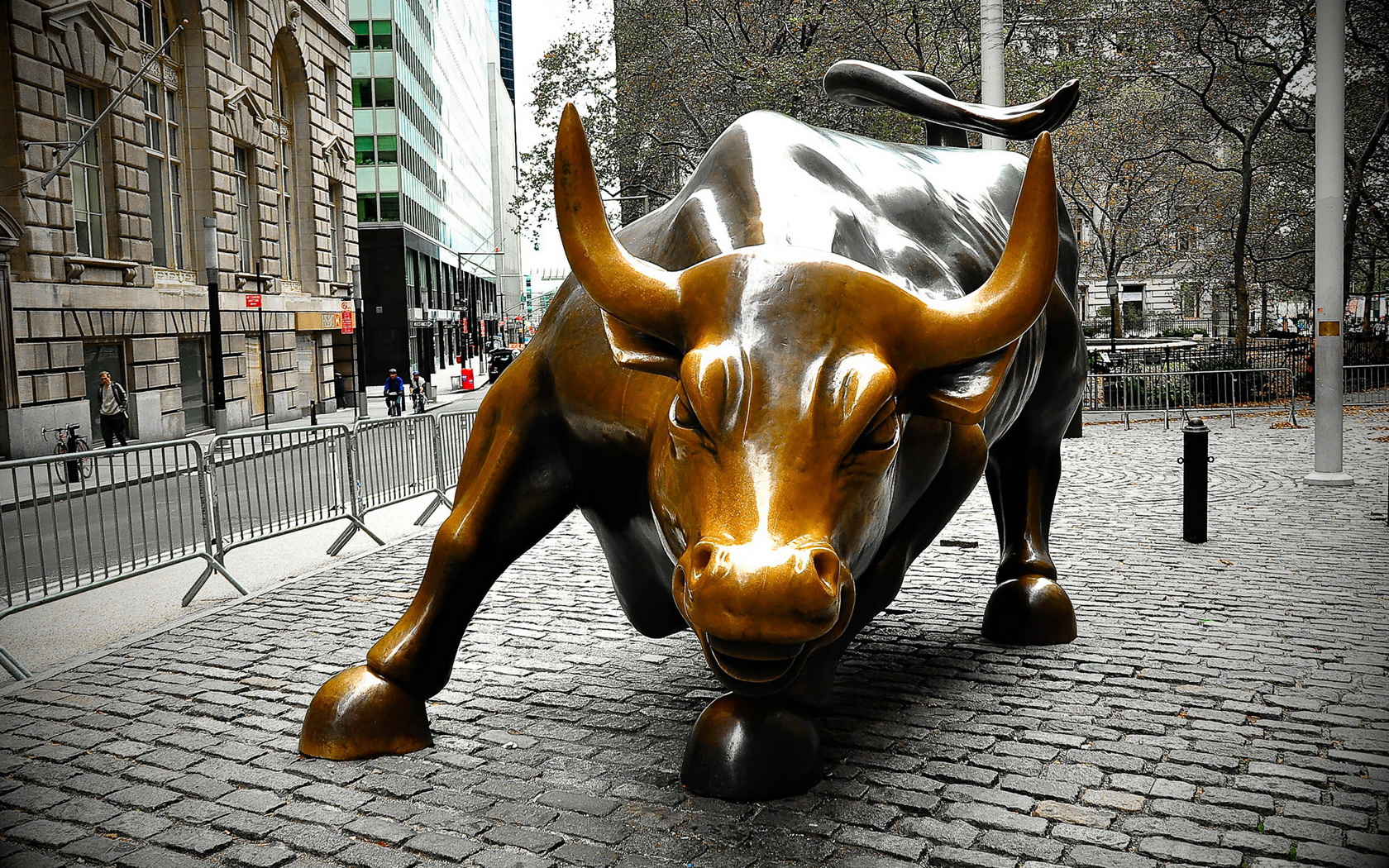Wall Street's Charging Bull: Where To Find It & What It Symbolizes
Is it possible for a single artwork to embody the spirit of a city and the resilience of its people? In New York City, the answer is a resounding yes, and that artwork is the iconic Charging Bull of Wall Street.
This imposing bronze sculpture, weighing a staggering 3,200 kilograms (7,000 pounds), has become a global symbol of financial optimism and the enduring strength of the American spirit. But the story behind the bull is far more compelling than its impressive physique, a tale of artistic defiance, economic recovery, and the unexpected embrace of public adoration. The "Fearless Girl" statue, which faces the bull, also attracts many visitors.
| Characteristic | Details |
|---|---|
| Name | Charging Bull (also known as the Wall Street Bull or Bowling Green Bull) |
| Artist | Arturo Di Modica |
| Location | Bowling Green Park, near Wall Street, New York City |
| Material | Bronze |
| Weight | 3,200 kg (7,000 lbs) |
| Dimensions | 3.4 meters (11 ft) high and 4.9 meters (16 ft) long |
| Creation Date | December 1989 |
| Symbolism | Optimism, prosperity, financial strength, the spirit of the American people. |
| Origin Story | Created and installed illegally by Di Modica after the 1987 stock market crash. |
| Controversy | Initially considered an act of vandalism by authorities. |
| Modern Status | Officially embraced as a symbol of Wall Street and a popular tourist attraction. |
The bull's story begins in the aftermath of the 1987 stock market crash. The financial world was reeling, and the mood was bleak. Italian-born artist Arturo Di Modica, witnessing the widespread despair, felt compelled to create a symbol of hope and resilience. His vision was a powerful bull, a creature synonymous with strength and charging forward, embodying the unwavering spirit of the American people. He wanted to "symbolize the determination and spirit of the American people," particularly the people of New York who, after the Wall Street crash in 1986, had to pull themselves together to pick up the pieces of a broken economy.
Di Modica, without seeking permission or commissioning, poured his own resources into the project. He worked tirelessly in his Soho studio, crafting the bronze masterpiece. Then, in a daring act of artistic guerilla warfare, he surreptitiously installed the Charging Bull in front of the New York Stock Exchange on December 15, 1989. He took the bronze bull, weighing 7,000 pounds from his Soho studio without the knowledge of the authorities.
The installation was initially met with controversy. The authorities, viewing it as an act of vandalism, quickly seized the bull. However, the public reaction was overwhelmingly positive. People were captivated by the sculpture's energy and the message it conveyed. The Charging Bull resonated with the city's spirit, embodying a sense of moving forward, a refusal to be defeated by adversity. The act was initially understood by the authorities as vandalism, and on that same day the Wall Street bull was seized by the New York police.
The popularity of the bull forced the authorities to reconsider their stance. The sculpture was eventually allowed to remain, but it was relocated to its current position in Bowling Green Park, near Wall Street, where it has become a permanent fixture, near the end of Broadway.
The location is significant. Broadway, the widest street in New York, runs from the south to Bowling Green, exactly where the famous Charging Bull statue (or Wall Street Bull or Bowling Green Bull) is located.
The Charging Bull is not just a statue; it's an experience. Visitors from around the world flock to Bowling Green to witness it firsthand. People pose for photographs, rub its horns for good luck (a surprisingly widespread urban legend), and feel a sense of connection to the city's history and its financial heartbeat. The sculpture has earned a great reputation, not only among New Yorkers but also among tourists who, during their stay in the Big Apple, do not miss the opportunity to see it live.
The creation and location of the bull have become legendary in their own right. It's a reminder that art can be a catalyst for change, a source of inspiration, and a symbol of hope, even in the face of economic hardship. Even though it is not located on Wall Street, the work is still known as the Wall Street bull.
Today, Wall Street has many professionals dedicated to finance. Businesses in the area are oriented to serve the staff of these companies, such as restaurants, shops, and places that have a lot of atmosphere from Monday to Friday. There are tours available to explore this emblematic neighborhood in southern Manhattan.
The Charging Bull, however, is more than just a monument to financial prowess; it symbolizes prosperity and optimism, that "bullish" sentiment. The "Fearless Girl" in front of Wall Street is also one of the most curious statues, the statue of a girl who, with a brave pose, challenges the famous Wall Street bull.
It's recommended to visit the financial district early in the morning before the area is flooded with tourists. If you are lucky enough to travel to New York, there are several emblematic places that you cannot miss, like the Statue of Liberty, Central Park, and Times Square. However, as finance lovers, a mandatory stop is one of the most famous places in the world. "Fearless Girl" in front of Wall Street and other images left by International Women's Day on March 9, 2017.
The Charging Bull, also known as the Wall Street Bull or New York Stock Exchange Bull, was created in December 1989 by the Italian artist Arturo DiModica. This "discreet" bronze statue weighs more than 3,200 kilograms and symbolizes the optimism and strength of the people after the fall of the New York Stock Exchange in 1986.
The Charging Bull is an enduring reminder of the city's resilience. The famous sculpture of a charging bull is located in New York City. The Charging Bull, also known as the Wall Street Bull, was created by the Italian artist Arturo di Modica in 1989. This beautiful work of art is made of bronze, weighs 3.2 tons, is 3.4 meters high and 4.9 meters long.
The story of the Charging Bull offers important lessons. It demonstrates the power of art to connect with the public on an emotional level, to inspire hope, and to celebrate the human spirit in the face of adversity. The bull also serves as a testament to the enduring legacy of New York City, a place where art, finance, and resilience intertwine to create a vibrant and unforgettable experience.
The Charging Bull continues to draw crowds, reminding everyone of its powerful message. The sculptures presence serves as a constant reminder of what the city has overcome.


